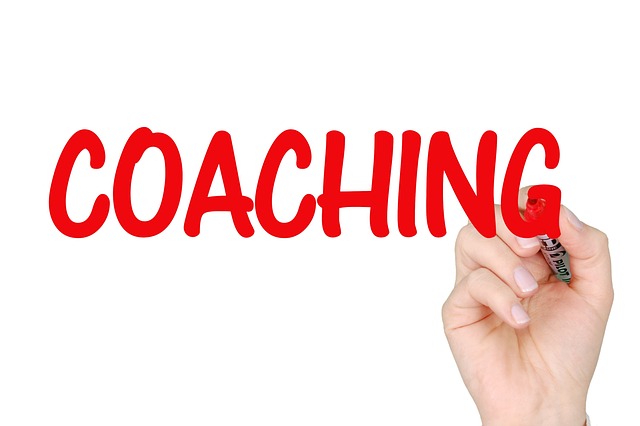The Role of Coaching in Employee Development
Coaching has emerged as a transformative process within the realm of employee development. It’s a dynamic interplay between a coach and an employee, designed to unlock potential and foster personal and professional growth. By engaging in coaching, organizations can reshape their employee development strategies significantly. First, let’s explore what coaching entails. It’s not just about imparting knowledge; it’s about facilitating a journey towards self-discovery, helping individuals identify and leverage their strengths. Unlike traditional training programs that often focus solely on skill acquisition, coaching emphasizes holistic growth and addresses emotional intelligence, resilience, and adaptability. This individualized approach ensures that employees feel seen, heard, and understood, which promotes engagement and motivation.
Moreover, it’s crucial to distinguish between different types of coaching. While some might envision coaching as an ad-hoc performance improvement tool, successful employee development programs integrate coaching into their core strategies. Consider executive coaching, which targets leaders and aspiring leaders to refine their management skills. This specialization acknowledges that higher positions come with unique challenges requiring nuanced solutions. Likewise, peer coaching encourages collaborative learning among employees at similar levels, fostering a culture of shared knowledge. This mutual support greatly amplifies personal accountability and communication skills. Hence, organizations reaping the benefits of coaching must understand these distinctions to implement a more tailored coaching strategy.
The Impact of Coaching on Employee Engagement
Employee engagement is one of the most critical facets of any organization’s success. When employees feel engaged, their productivity skyrockets. Research shows that companies with higher employee engagement levels see better performance and lower turnover rates. Coaching plays an instrumental role in enhancing engagement levels. Engaged employees feel supported. They have access to ongoing feedback and the opportunity to discuss challenges and triumphs in a safe space. This consistent interaction not only builds trust but also fosters a culture of continuous learning. With a coach guiding the way, employees can navigate their career paths more confidently. They recognize that their organization is invested in their growth, which in turn cultivates loyalty.
It’s fascinating how coaching can shift an employee’s mindset from feeling like a cog in a machine to recognizing their invaluable contributions. Engagement isn’t just about task fulfillment; it’s about finding purpose. By helping employees align their personal goals with organizational objectives, coaches enable a stronger sense of belonging. This shift creates a virtuous cycle: engaged employees contribute positively to the workplace environment, which, in turn, enhances the coaching experience. The feedback loop generated through coaching interactions ensures that employees not only have a voice but feel empowered to influence their work environment.
The Mechanisms of Skill Development through Coaching
A major goal of employee development through coaching is skill enhancement. Think of skills not just as tasks to complete but as tools that empower employees in their everyday roles. Traditional training often adopts a one-size-fits-all approach. This can leave some employees feeling lost, unable to grasp material that doesn’t resonate with their personal experience. Here, coaching comes into play as a personalized guide. Coaches begin by assessing an employee’s current skills and identifying gaps. Through tailored sessions, they can work on specific skills, whether they’re technical, such as Excel for data analysis, or soft skills like communication and teamwork.
One-on-one interactions amplify the learning process. Employees can practice new skills in real-time with immediate feedback. This instant encouragement bolsters confidence, helping individuals to experiment and explore new methods without fear of judgment. Coaches often utilize role-playing, scenario planning, and other interactive techniques to make skill development practical and engaging. By continuously challenging and supporting employees, coaches instill a growth mindset. They teach the importance of resilience, showing that setbacks are merely stepping stones to success. Thus, the impact of coaching on skill development extends far beyond the acquisition of knowledge; it fosters a culture of continual improvement and lifelong learning within organizations.
Tailoring Coaching Approaches to Individual Needs
Understanding that each employee is unique is vital in creating a coaching approach that resonates. No two individuals possess the same strengths, weaknesses, and aspirations. Coaches must adopt a flexible methodology to cater to these differences. They often start with thorough assessments, using tools like personality assessments, performance appraisals, and self-reflective exercises. These instruments help to map out each individual’s characteristics and life experiences. By having a clearer picture, coaches can align their coaching interventions to effectively meet the employee’s needs.
As the coaching relationship develops, the focus shifts toward maintaining adaptability. Some employees thrive on structured sessions, while others prefer goal-driven, freestyle discussions. A skilled coach can gently guide the process while allowing room for deviation where necessary. They create an environment that encourages vulnerability, setting the tone for honest communication. This approach fosters an open dialogue about personal and professional goals, aspirations, or even fears. By meeting employees where they are, coaches facilitate deeper connections and empower individuals to take ownership of their development. Additionally, organizations deriving value from this approach often witness significantly improved employee satisfaction, retention, and overall workplace morale.
Coaching in Performance Management
Another critical aspect of coaching within employee development is performance management. Traditionally, performance evaluations often entailed annual reviews laden with scores and rankings. These approaches frequently left employees feeling anxious about their perceived shortcomings. Luckily, coaching offers a refreshing alternative. Rather than being retrospective, coaching focuses on forward-looking strategies. It encourages continuous dialogue between employees and managers, allowing for regular check-ins and feedback loops. This ongoing interaction transforms the performance management process into a dynamic conversation. Instead of viewing evaluations as a judgment, employees come to see them as opportunities for growth.
Moreover, the role of coaching in performance management presents clarity on expectations. Coaches help employees to set clear, attainable goals aligned with organizational objectives. These targets serve as shared accountability points, ensuring everyone understands their contributions toward the larger mission. Perhaps most importantly, this ongoing coaching relationship fosters a sense of ownership in the developmental journey. Employees are not just passive recipients of feedback; they actively engage in the dialogue. This proactive involvement leads to enhanced performance levels and, ultimately, organizational success.
Fostering a Coaching Culture within Organizations
Creating a culture of coaching demands commitment and intentionality from leadership. It doesn’t stop with a few coaching sessions; it involves building a comprehensive framework that emphasizes continuous learning at all levels of the organization. Leaders must champion coaching, demonstrating its value through their actions. For example, when senior leaders engage in coaching themselves, they set a powerful example for their teams. This trickle-down effect encourages a growth mindset culture throughout the organization.
Additionally, integrating coaching into the onboarding process helps new employees feel welcomed and supported immediately. Rather than diving headfirst into responsibilities with little guidance, new hires benefit from ongoing coaching relationships right from the start. Organizations also should invest in training their coaches, ensuring they have the tools and methodologies required to guide employees effectively. By prioritizing coaching as a core value, companies not only enhance their employee development initiatives but also cultivate a healthier and more dynamic workplace.
Evaluating Coaching Effectiveness
For organizations investing time and resources into coaching, understanding its effectiveness is paramount. Evaluating the impact of coaching on employee development can take various forms. Surveys, feedback sessions, and performance metrics all provide valuable insights into how coaching influences individual growth. Organizations can deploy anonymous surveys to gauge employee satisfaction with coaching programs. Questions can focus on perceived support, the relevance of coaching sessions, and personal growth achieved through the coaching experience. Additionally, tracking performance metrics over time can showcase how coaching impacts productivity and goal achievement.
However, qualitative feedback matters just as much. Gathering narratives about individual journeys can reveal deeper insights into how coaching has impacted employees’ mindsets, career trajectories, and overall engagement. These stories can illuminate successes and highlight areas for improvement. As organizations regularly evaluate coaching effectiveness, they cultivate a culture of accountability and progress. Furthermore, it allows for the refinement of coaching methodologies, ensuring they remain relevant and impactful.
Conclusion: The Future of Coaching and Employee Development
As workplaces evolve, the role of coaching in employee development continues to grow. The advent of remote work and digital communication brings new challenges and opportunities. Primarily, coaching can adapt through virtual platforms, providing flexibility while still fostering meaningful relationships. Emerging technologies, such as AI-driven analytics tools, can aid in measuring coaching effectiveness and tailoring sessions to meet employees’ unique needs. Consequently, organizations must embrace innovation while maintaining a people-first approach to coaching.
Coaching empowers employees, fostering an environment where they feel confident, supported, and valued. Organizations that invest in these relationships yield dividends in employee retention, engagement, and overall company performance. In this rapidly changing world, the role of coaching as a cornerstone of employee development will undoubtedly grow, leading to workplaces that not only strive for excellence but prioritize the well-being and growth of their most valuable asset: their people.
FAQs
- What exactly is coaching in the workplace?
- Coaching in the workplace refers to a developmental process where a coach supports an employee in achieving personal and professional goals through guidance, feedback, and encouragement.
- How does coaching differ from traditional training?
- Unlike traditional training, which often focuses on imparting knowledge to a group, coaching emphasizes personalized guidance, continuous feedback, and individual growth.
- What are the benefits of integrating coaching into employee development?
- Integrating coaching into employee development enhances engagement, boosts productivity, facilitates skill development, and fosters a culture of continuous learning.
- Can coaching be conducted virtually?
- Yes, coaching can be conducted virtually using digital platforms. Virtual coaching provides flexibility while maintaining effective communication between coaches and employees.
- How can organizations measure the effectiveness of coaching?
- Organizations can measure coaching effectiveness through employee surveys, performance metrics, and qualitative feedback. Gathering insights helps refine the coaching process.



